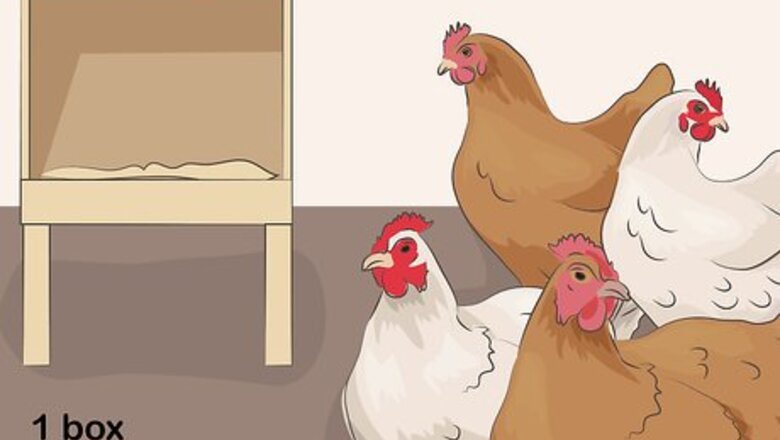
views
Designing Your Boxes
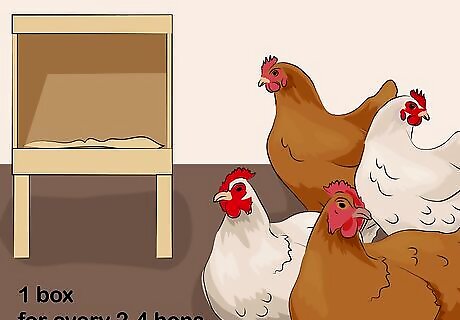
Make at least 1 box for every 2-4 hens. Hens will trade off using the boxes depending on who is laying, so this will ensure that your hens have enough space and don’t have to fight over boxes. However, if you are thinking about getting more chickens eventually, you may want to consider making more.
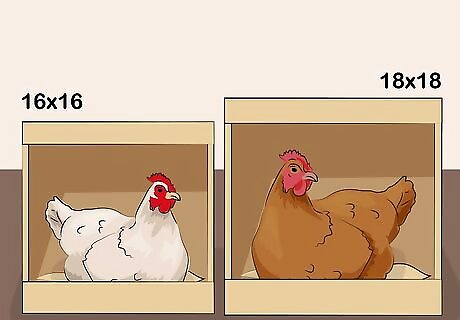
Determine how large your boxes should be. For most chickens, 16 by 16 by 16 inches (41 × 41 × 41 cm) is a good size. If you have a larger breed, like Orpingtons or Rhode Island Reds, you may want to make larger boxes, like 18 by 18 by 18 inches (46 × 46 × 46 cm). You can make your boxes smaller if your space is very limited, but they should be at least 12 by 12 by 12 inches (30 × 30 × 30 cm).
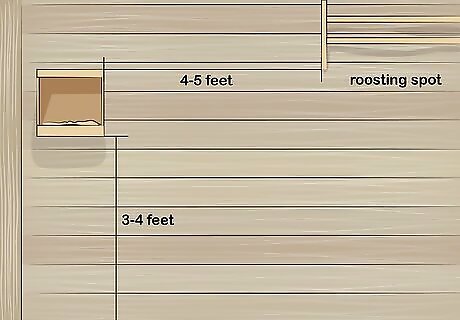
Choose a place for your nesting boxes. They should be inside the coop and 3–4 feet (0.91–1.22 m) off the ground to protect your birds from predators. However, they should be lower than your chickens’ roosting spot and 4–5 feet (1.2–1.5 m) away from it, or they may end up roosting in their boxes instead, which will lead to very messy nests.
Measuring and Cutting the Pieces
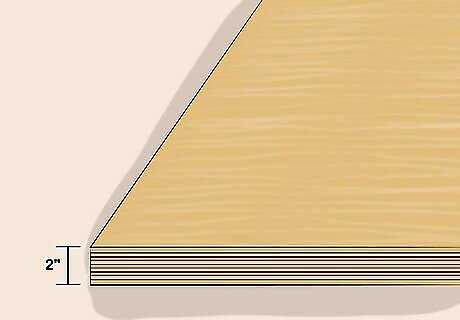
Choose a flat wood like plywood that is about 2 inches (5.1 cm) thick. You can buy this at a construction supply store like Lowe’s or Home Depot, but you can also use scraps from a place like Habitat for Humanity’s ReStore for much cheaper. If you have scrap wood lying around from a past project, this can be an ideal use for it. If you are making 16 × 16 × 16 in (41 × 41 × 41 cm) boxes, the scraps should be at least 16 inches (41 cm) square. You should also have 6 pieces that are as long as all your boxes put together, and 3 of them should be at least 16 inches (41 cm) wide.
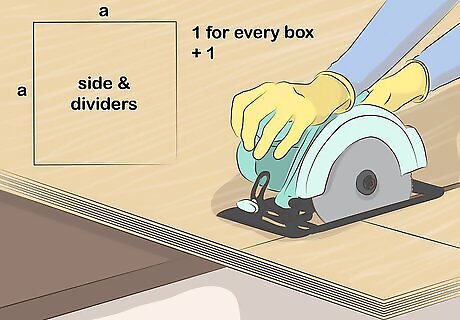
Cut out your side and divider pieces using a circular saw or table saw. You should have 1 of these for every box you’re making, plus 1 more. They should be the width and length that you want each box to be. If you’re making 16 × 16 × 16 in (41 × 41 × 41 cm) boxes, your side and divider pieces should be 16 inches (41 cm) square. Measure and mark where you will cut before using your saw. You should always wear work gloves, safety glasses, and a dust mask while cutting, and work on a stable surface.
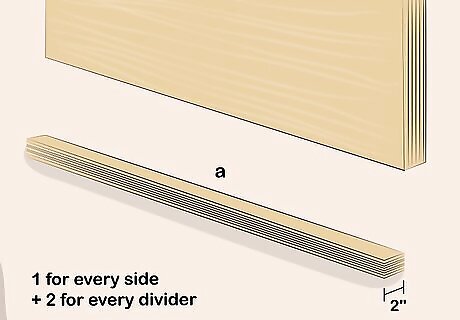
Make support pieces for your sides and dividers. These should be the same length as your side and divider pieces, but only 2 inches (5.1 cm) wide. You will end up using these pieces to hold the sides and dividers in place and make the boxes more stable. Cut 1 for each side and 2 for each divider.
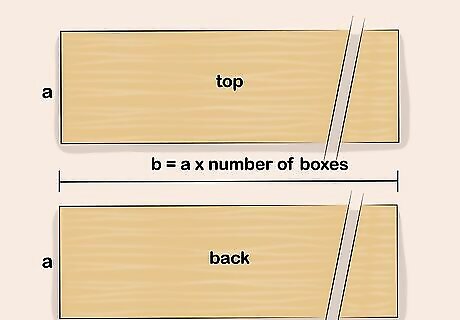
Create back and top pieces long enough to cover all your boxes. The width of these pieces will be the same as your side and divider pieces, and you can calculate how long it should be by multiplying the width times the number of boxes you’re building. For instance, if you’re making 3 boxes that are 16 inches (41 cm) wide, your top and back pieces should be 16 inches (41 cm) wide and 48 inches (120 cm) long.
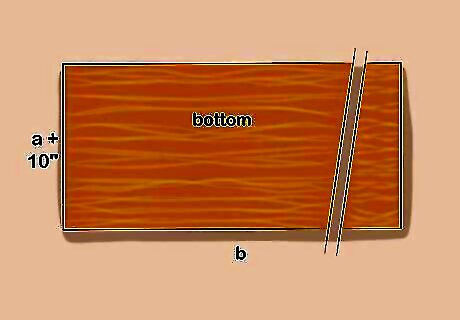
Make a bottom piece as long as the top piece but 10 inches (25 cm) wider. The bottom piece will create a ledge on the front and give you a place to put a perch bar for your hens to hop up onto when they enter the boxes.
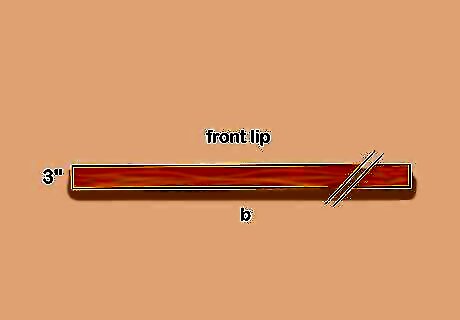
Cut 1 long piece for the front lip. You’ll want a short board that stretches across the bottom front of all the boxes, to keep the bedding and eggs from falling out. This should be as long as your top piece, and at least 3 inches (7.6 cm) wide. You can also use a long wire for the lip instead of a board. This will make it easier to clean your boxes as it can be easily removed, but may not be as effective at keeping eggs and bedding from falling out. The wire can be hooked onto a screw or nail on each side of the boxes, and removed when you want to clean dirty bedding materials out of the boxes.
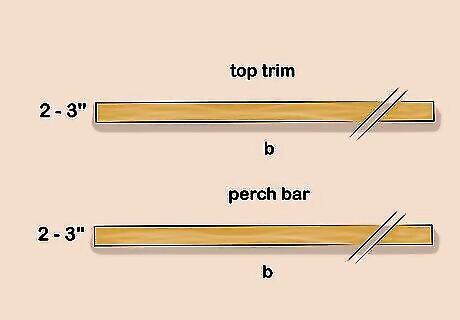
Cut two pieces for the top trim and perch bar. These should be as long as your top piece and 2–3 inches (5.1–7.6 cm) wide. One will go along the front top of your boxes and screw into the top and sides for extra stability, and one will be screwed to the front of the protruding bottom piece to serve as a perching bar for your chickens. This will give them something to grasp when they hop up onto the platform to enter their boxes.
Assembling the Boxes
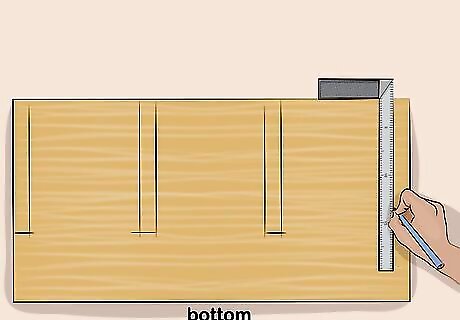
Measure and mark where your dividers will go on the bottom piece. If you are making your boxes 16 inches (41 cm) wide, measure 16 inches (41 cm) from one side, mark it, and repeat this for each divider. This will ensure that you’re placing the dividers evenly so that all the boxes end up the same size. You should measure and mark along both lengthwise edges of the bottom piece to be sure your measurements are straight.
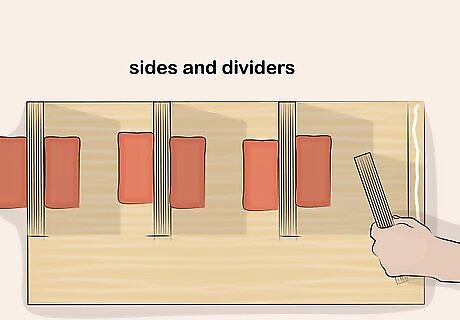
Glue your sides and dividers to the bottom piece using wood glue. Follow the markings you made on the bottom piece and glue your dividers in place, using a heavy object to prop them up on each side while they dry. Glue your side pieces in place on each short edge of the bottom piece and prop them up as well. When you’re propping up the piece to dry, use a level to make sure they’re positioned straight up and down. Otherwise, you’ll have trouble attaching the top piece.
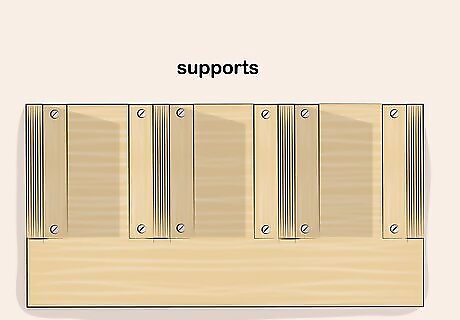
Attach supports to the bottom piece next to each side and divider. Once the glue on the sides and dividers is dry, take the support pieces you cut and screw or nail them down on either side of each divider. Do the same next to each side piece.
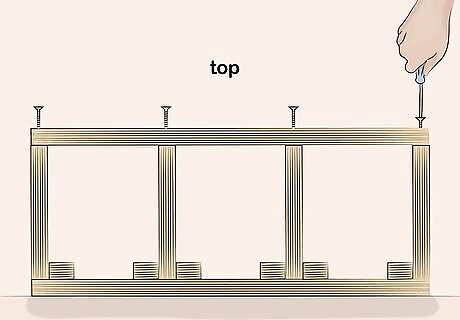
Add the top piece to your boxes. It should fit on the boxes so that it’s flush with the top edges of each side and divider. Attach it with 2-3 screws or nails in each place where it meets a side or divider. Make sure your nails or screws are long enough to go through the top piece and at least 1 inch (2.5 cm) into the sides or dividers underneath it. For extra stability, flip the boxes over and put 2-3 screws or nails in the bottom piece in each place where it meets a side or divider.
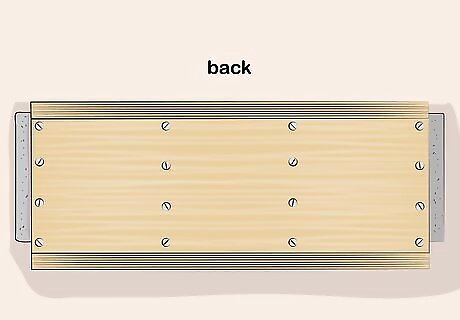
Turn the boxes over and attach the back piece. The back side of the boxes, where you will attach the back piece, should be facing up so that you can rest the back piece on top while you attach it. Use at least 6-8 nails or screws for each box to ensure that it’s well secured. Since the bottom piece will stick out farther in the front, you may need to set the boxes on top of cinder-blocks so that it can lie flat. You can also have 2 people hold the back piece in place while you attach it instead of turning it over.
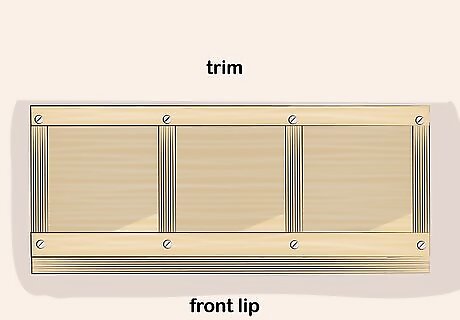
Attach the front lip and trim. These are the two long, thin boards that you will attach to the top front and bottom front of the boxes to secure them and keep bedding from falling out. Flip the boxes over so that the front faces up and the back piece is resting on the ground. Place the front lip along the bottom edge and attach it, using one screw or nail for every side and divider. Do the same with the trim along the top edge.
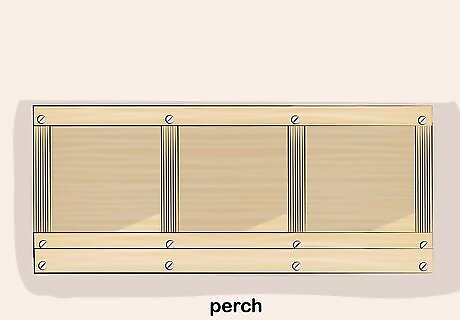
Add the perch board to the bottom piece. Set it so that it runs along the front edge of the bottom piece where it sticks out further than the boxes. Attach it using 1 screw or nail for every box.
Encouraging Your Hens to Nest
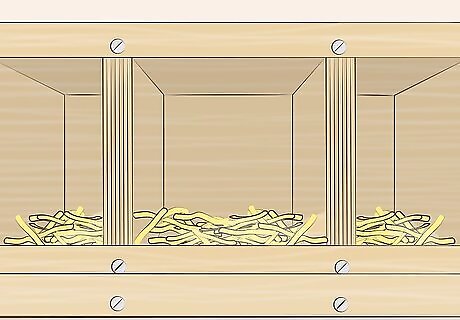
Make bedding material for your boxes. Hens will be more likely to use the boxes if they contain some nest-like material. Straw and dried grass can make good bedding, as long as you’re sure they didn’t come into contact with pesticides or chemicals. Shredded paper can also be an affordable option, but steer clear of paper with colored inks, glossy paper, and receipt paper, as these can all be toxic to your hens. Wood shavings are ideal, as they are easy to clean and usually have a pleasant smell. The boxes should have at least 3 inches (7.6 cm) of bedding, and you may need to add more periodically if it becomes flattened or is kicked out of the boxes. If you are using wood shavings, avoid cedar, since it contains aromatic oils that can be harmful to chickens. Pine is best.
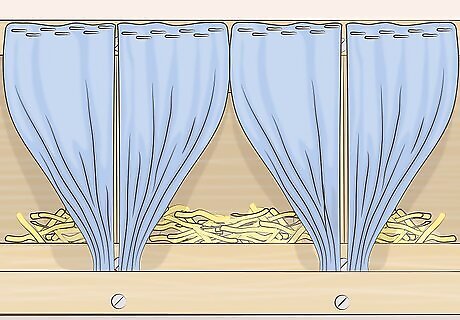
Use fabric scraps or feed sacks to make curtains. Hens will be more likely to nest if the boxes feel private and safe. Cut 2 pieces for each box so that a hen can easily enter the box between them, then attach them to the top of each box with thumbtacks, staples or glue. The curtains should be large enough that they cover the entire opening of the box. If your hens do not seem to be entering the boxes, try pinning or tying the bottoms of the curtains to the side to make the opening between them obvious. Any kind of fabric will do, but if you want to avoid unsightly unraveling, use stretchier knit fabrics or hem the edges.
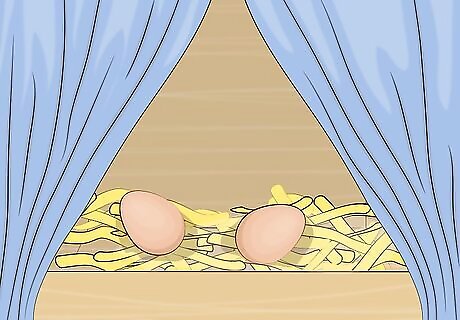
Add golf balls or fake eggs to encourage laying. Hens may be more likely to lay and become broody if they believe there are already eggs in the nest. Fake eggs can be purchased from farm supply companies or even hobby stores.
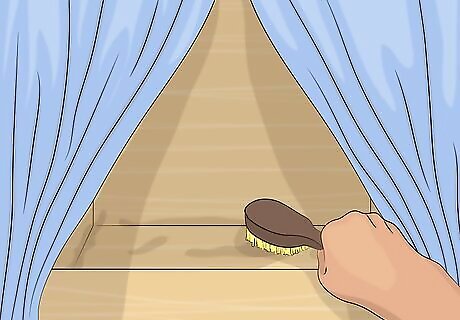
Keep your boxes clean. Check them every week or so to make sure the bedding is not damp or stinky, and that the boxes are not full of manure. Straw, dried grass and shredded paper are especially likely to become smelly within a few weeks, and the bedding should be changed out when that happens. Clean nests will help keep your hens safe from disease and infection. When you clean out the bedding, check to see whether the box itself seems to be crusted with dirt or manure. If it is, clean it with some water, a scrub brush, and an unscented, eco-friendly cleaning solution like Dr. Bronner’s.

Avoid pest problems by using herbs. Mixing a few handfuls of dried herbs such as lavender, rosemary and thyme in with your bedding can help deter pests such as mites, while also keeping your boxes smelling fresher. Avoid using fresh herbs in the boxes, as they may decompose too quickly and create bad odors or mold.

















Comments
0 comment